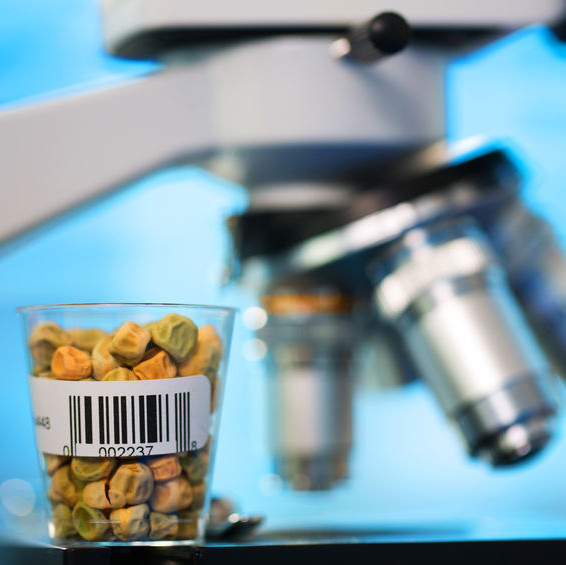
Non-GMO Ingredients
What are Non-GMO Ingredients?
Non-GMO or GMO-free ingredients are from crops that have not been genetically altered using novel genetic engineering or DNA manipulation techniques. These modifications are different from traditional cross-breeding or hybridization.
GMOs are found extensively in major crops grown in the United States, such as:
- Corn
- Soy
- Sugar beets
- Canola
Origin
The U.S. policy regulating biotechnology was established in 1986, and the USDA released guidelines for organic foods in 2002.1 Since GMO foods were first introduced to the market in the mid-1990s, consumers have questioned the validity of risk assessments. Their concerns are for for consumer health and environmental risks, particularly the potential long-term effects.1 Concerns have triggered a discussion on the desirability of labelling GM foods, allowing for an informed choice of consumers.2
GMO-Free Certification
Non-GMO certification for products, ingredients and manufacturing facilities is done using a third party. The Non-GMO Project is the most recognized label in the U.S. Its certification follows these steps:
- Filling out an inquiry form and selecting technical administrators
- Signing the Non-GMO Project license agreement
- Completing product evaluation and on-site inspection to generate certificate of compliance.
- Promoting verification via permission to use the Non-GMO mark and eligibility for listing on the Non-GMO Project website and shopping app.
- Annual renewal.
Current USDA GMO-approved crops in the US:
- Corn
- Soybeans
- Canola
- Cotton
- Sugar beets
- Alfalfa
- Papaya
- Yellow “crook neck” squash
- Zucchini
- “Arctic” apple
- “Innate” potato
Baking with non-GMO ingredients
Switching to GMO-free baking can be achieved with organic ingredients. Under the guidelines for the National Organic Program (NOP), 7 CFR § 205.105 of the NOP regulations, the USDA prohibits the use of GMOs as excluded methods in organic production and handling.3
Although GMO-wheat is not approved for commercial production or sale in the U.S. and North America, minor bakery components may inadvertently introduce GMO ingredients to bakery products:
- Baking powder: commercially-available baking powder is a mixture of sodium bicarbonate, leavening acid and corn starch. Since the majority of U.S. corn (~88%) comes from genetically modified crops, bakeries should verify that the corn starch used in baking soda is GMO-free. Alternatively, they may opt for baking soda containing starch from potato or arrowroots.
- Oils used in baking: soybean, canola and corn oils are often produced from GMO crops. For a GMO-free label, bakeries can switch to oils from organic versions of soy, canola or corn. Or, use sunflower, olive or peanut oils where no GMO technology is currently used.
- Chocolate chips: can be made from non-GMO Cocoa beans, but may contain small amounts (0.05%) of soy lecithin from genetically modified soybeans.
- Dried fruits: essentially non-GMO, but are often coated with a small amount of oil from genetically modified sources to keep it soft.
FDA regulations
Three government agencies are charged with regulating all stages of the development of GM plants from initial field trials through commercialization.
The USDA controls the importation, movement and confined field trials of GMOs via permitting and notification processes. It evaluates whether the plant is safe to grow. The EPA regulates the evaluation and registration of all pesticidal products including GM crops. It evaluates certain GM plants that are resistant to pests for environmental safety.
The FDA is responsible for regulating the safety of GM crops that are eaten by humans or animals. According to a policy established in 1992, FDA considers most GM crops as “substantially equivalent” to non-GM crops. In such cases, GM crops are designated as “Generally Recognized as Safe” under the Federal Food, Drug, and Cosmetic Act (FFDCA) and do not require pre-market approval.
However, if the insertion of a transgene into a food crop results in the expression of foreign proteins that differ significantly in structure, function, or quality from natural plant proteins and are potentially harmful to human health, FDA reserves the authority to apply more stringent provisions of FFDCA requiring the mandatory pre-market approval of food additives, whether or not they are the products of biotechnology.
Only after the 3-agencies evaluation process is complete are farmers allowed to grow a new GM crop product in the United States.
Labeling Non-GMO Ingredients
When the terms “GMO free,” “GE free,” “does not contain GMOs,” “non-GMO,” and similar claims are made on a food label they must be substantiated. False or misleading statements such as “None of the ingredients in this food is genetically engineered” on a food where some of the ingredients are incapable of being produced through genetic engineering (e.g., salt) are not encouraged by the FDA.2,4
References
- Huffman, Wallace. “Issues in GM and Non‐ GM Coexistence: A United States Perspective.” EuroChoices 15.1 (2016): 69-73.
- “Q&A: Genetically Modified Food.” World Health Organization. World Health Organization, Mar. 2014. www.who.int/foodsafety/areas_work/food-technology/faq-genetically-modified-food/en/. Accessed 22 May 2017.
- McEvoy, Miles. “GMO Disclosure & Labeling.” GMO Disclosure & Labeling. Agriculture Marketing Services, Jan. 2012. www.ams.usda.gov/rules-regulations/gmo. Accessed 22 May 2017.
- Center for Food Safety and Applied Nutrition. “Labeling & Nutrition – Guidance for Industry: Voluntary Labeling Indicating Whether Foods Have or Have Not Been Derived from Genetically Engineered Plants.” U S Food and Drug Administration Home Page. Center for Food Safety and Applied Nutrition, Nov. 2015. www.fda.gov/Food/GuidanceRegulation/GuidancedocumentsRegulatoryInformation/LabelingNutrition/ucm059098.htm. Accessed 22 May 2017.

